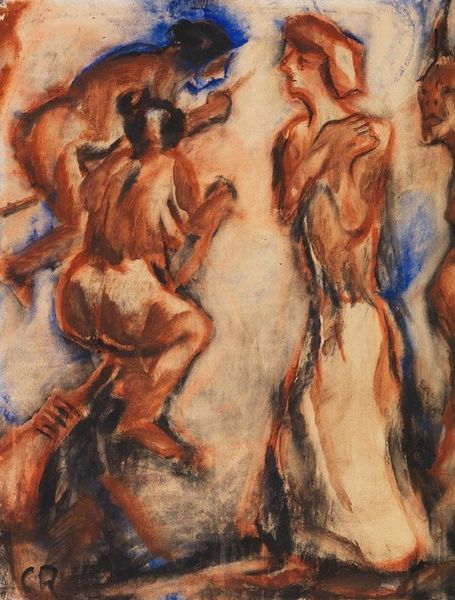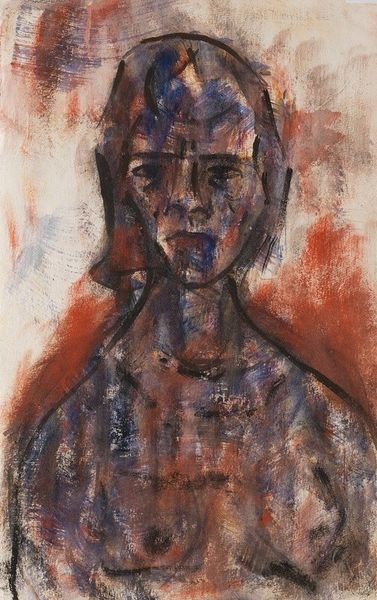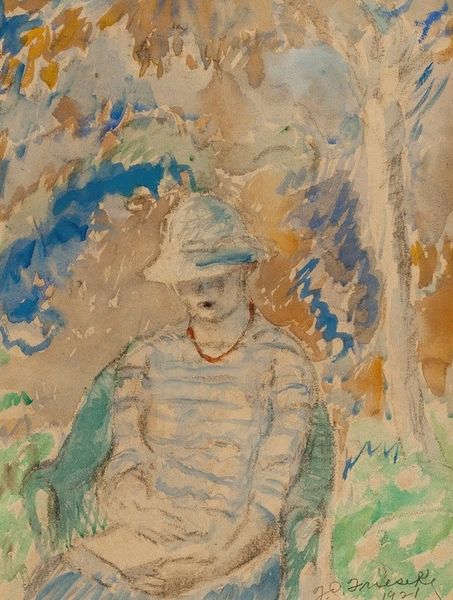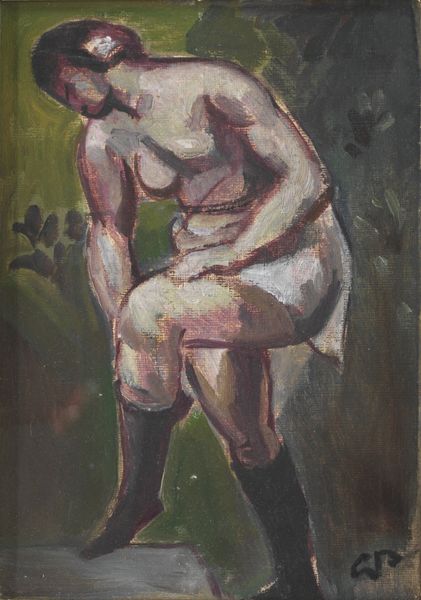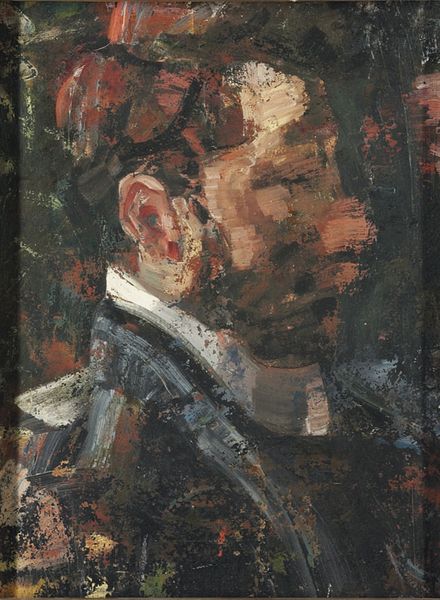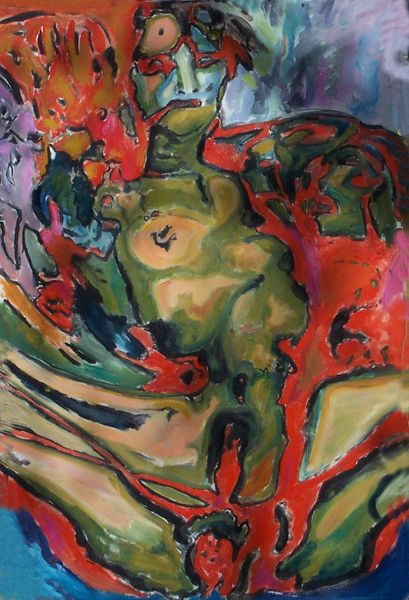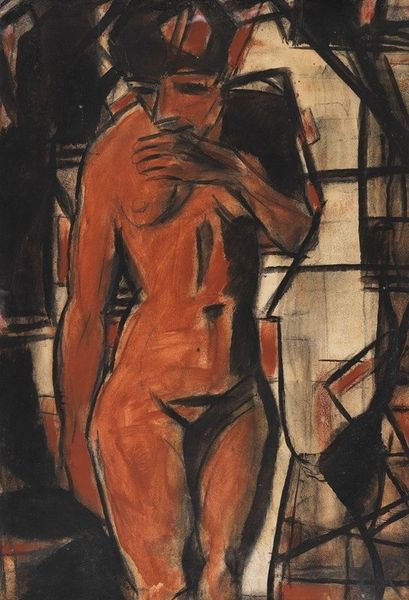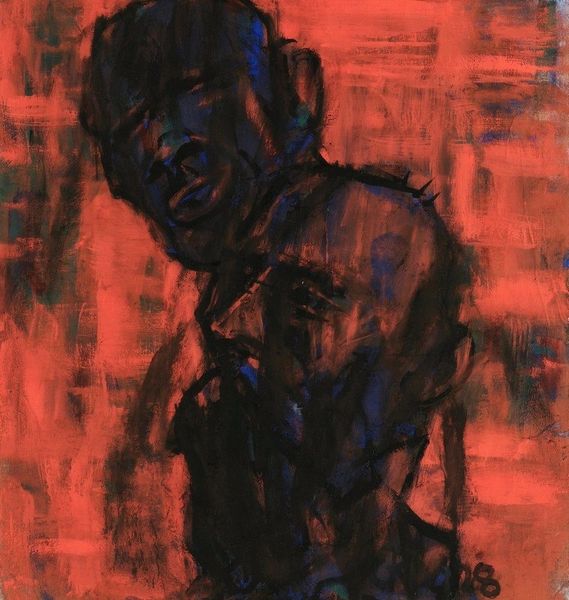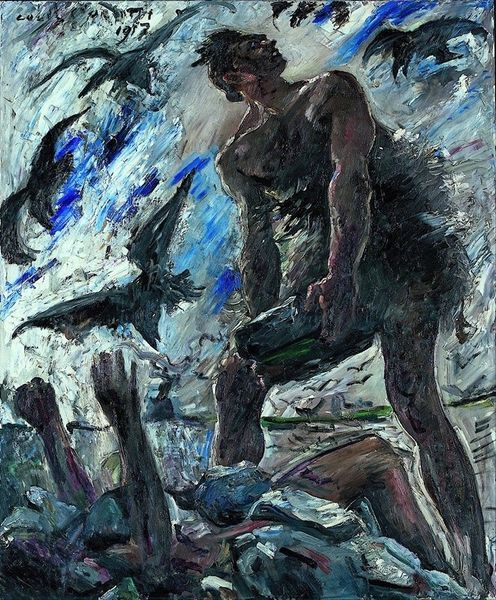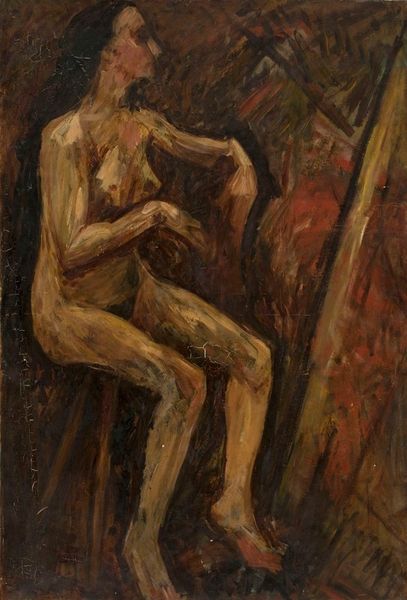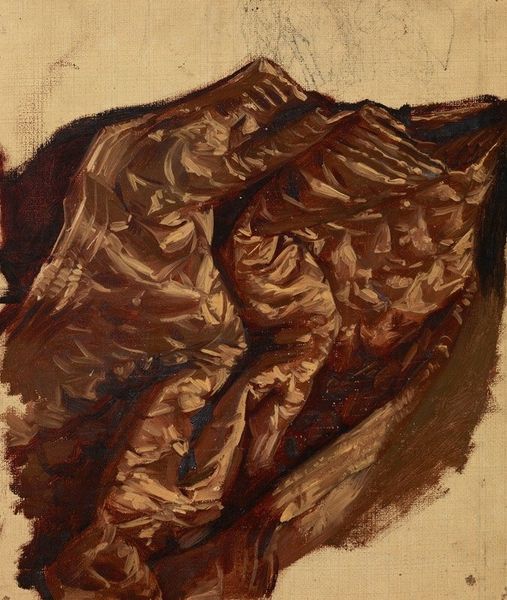
drawing, pastel
#
portrait
#
drawing
#
figurative
#
abstract painting
#
figuration
#
possibly oil pastel
#
oil painting
#
expressionism
#
pastel
#
nude
#
expressionist
Copyright: Public Domain: Artvee
Curator: The title of this artwork is "Arbeiter mit nacktem Oberkörper," which translates to "Worker with Naked Torso." It's attributed to Christian Rohlfs and thought to be created sometime between 1920 and 1930. Editor: It’s an intense piece, even at first glance. The colours, that stark burnt orange against the somber blacks and blues—there's a raw energy in the rendering of the human form. Curator: Absolutely. Rohlfs was deeply affected by the socio-political landscape of post-World War I Germany. There was considerable debate regarding the worker as an iconic symbol for national reconstruction and socialism. It is likely Rohlfs encountered some of these sentiments during his time teaching at the Folkwang Museum. Editor: I see how that translates to the visual language. The figure isn't idealized; it’s almost fragmented, constructed with these abrupt, almost violent strokes of colour. His posture is bent. There is an expression of physical hardship—but simultaneously of fortitude and strength. It's the abstract rendering that evokes feeling. Curator: Right, the lack of clear detail emphasizes the universality of the worker's plight. Rohlfs uses expressionistic techniques to depict more than just a physical body. This evokes the mental, and perhaps even the spiritual burden of the working class in Weimar Germany. Note the heavy, dark lines defining his posture, and how this emphasizes not just strength, but also weariness. Editor: I wonder about the medium. Perhaps pastel or oil pastel. This provides that tactile quality, the immediate application onto the textured paper, is quite impactful and fits with the broader theme you outlined. Curator: That texture absolutely connects back to our historical reading of the piece, this connection with materials is an act of solidarity. The visible labor in making this drawing acts as a powerful gesture of solidarity between Rohlfs and the subject matter he chooses. Editor: So, looking closer has illuminated the deeper themes encoded in his approach to form. The harsh beauty almost belies that element. Curator: Agreed. Understanding this work really shows us how art engages with critical moments. Editor: It certainly does. Thanks for the insight!
Comments
No comments
Be the first to comment and join the conversation on the ultimate creative platform.
